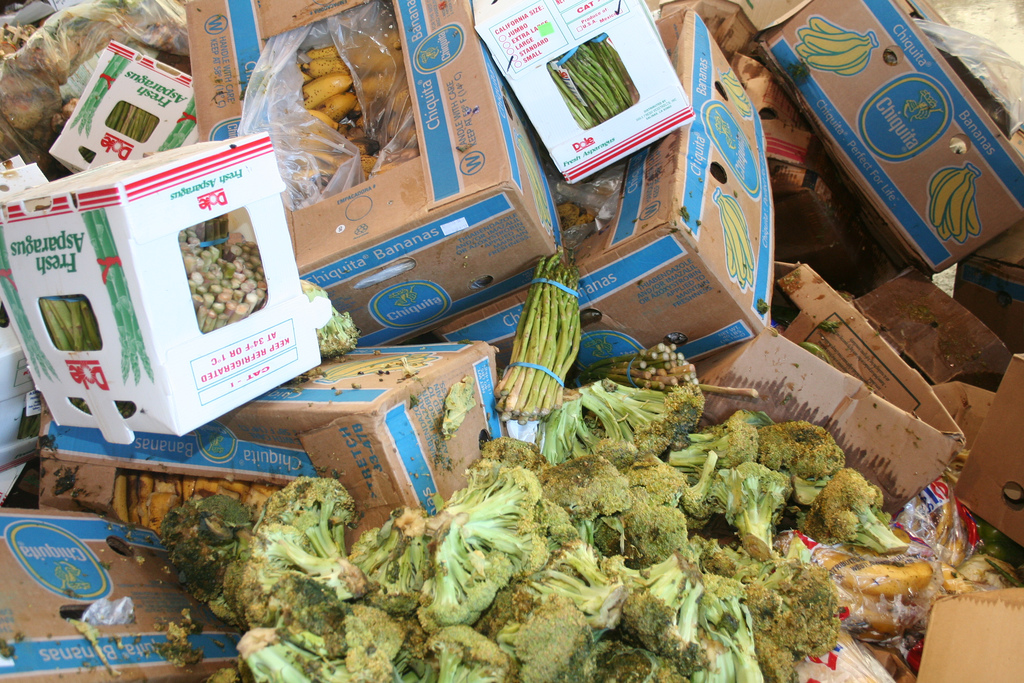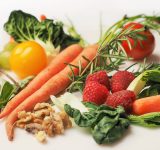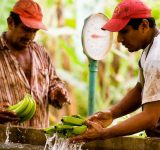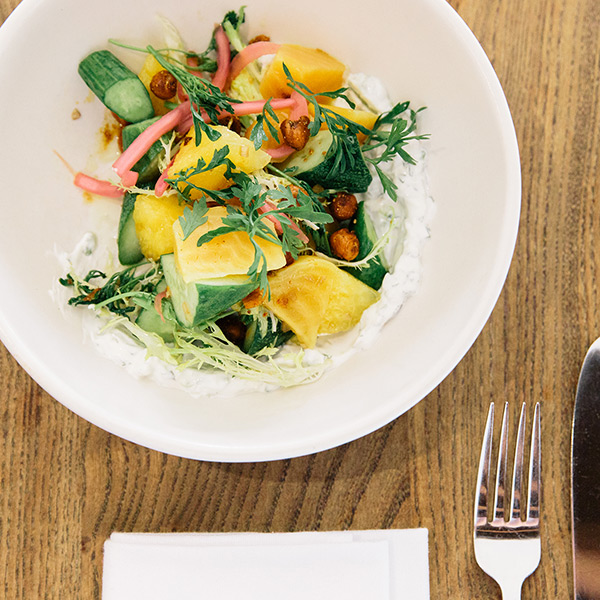
Up to 20% of all fresh foods that are grown and produced do not meet strict market requirements and often end up being plowed back into the soil or considered “waste” – produce that is crooked or discolored or has grown too large too quickly.
Another 8%-10% is trimmed off or thrown out at retail stores and restaurants – the stems of broccoli, the outside leaves of a head of lettuce, a mislabeled container of yogurt, food close to its expiration date, or a plate half eaten.
And if this was not enough, of all the food we buy, about another 20% goes to waste at the household level – the liter of spoiled milk, a two-week old moldy half-empty jar of tomato sauce, or the carrots in the back of your crisper that have gotten so soft you can bend them around your head.
So of all foods that are grown and produced in the United States, less than 50%, at best, actually end up in our stomachs. That’s a lot of food being wasted!

Local agriculture and local initiatives often make use of “food waste” – such as San Francisco Food Runners, a program that picks up excess perishable and prepared food from businesses such as restaurants, caterers, bakeries, hospitals, events, corporate cafeterias and hotels, and delivers it directly to shelters and neighborhood programs that feed the hungry; or the many gleaning programs throughout the country which add “seconds” to the weekly produce list of non-profit food programs, enabling thousands of people to have access to local organic foods – all while working within a food programs’ tight budget.


Find more information by listening to our episode “Food Waste in America: A Question of Value.”
For additional tips on how to avoid food waste at home, check out our recent episode “Wildly Affordable Organic”: Eat Healthy on a Budget.
And here is my tip of the week: Just a few days ago, I roasted the leaves of a beet in the oven, added a tad of salt and a sprinkle of olive oil, and they turned into crispy homemade chips – yum!
What else can we do? Share your insights and best tips on what you do at home, at work, or in your community to avoid food “waste” with us here: submit@anorganicconversation.com
We look forward to your suggestions!
Originally posted 2016-11-21 13:30:46.








I’ve pledge to make my household as close to waste-free as possible. This is how all of us can start. I accumulate all perishable food waste in a secure plastic bag and store it out of the way in the fridge. Once a certain amount is accumulated I go to a nearby forest and disperse it along the forest floor. This matter consist of stems from various leafy greens, fruit cores, peels and other vegetable matter. What isn’t eaten by wildlife simply degrades and enriches the soil – like composting of a different sort. Of course this has to be done mindfully as not to create any ugliness. Also it helps that my diet is plant-based but it may even be possible with mixed diets. Of course home composting is always an alternative. Similarly at an office building I worked I often diverted many cases of dated produce (apples, pears, bananas, etc.) to the forest where it fed deer, raccons and a host of others. The rest fed the plants. The key friends is don’t be shy or worry about being too forthright on this issue. Food is sacred and we’re wasting far too much. Remember this is on YOUR mind because you’ve been called to do something. Just know there are many others like you equally aware, concerned and quietly seeking to change such gross inefficiencies. Be bold – you have more unseen support than you know.